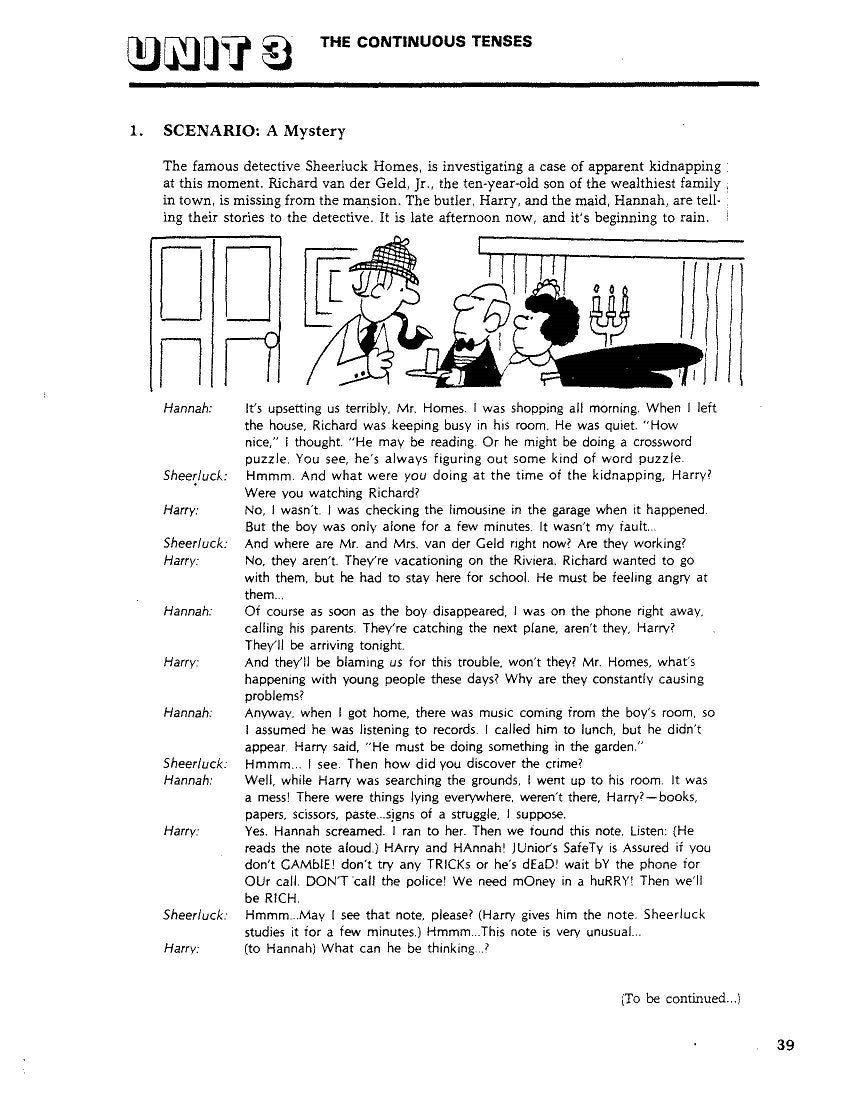1
/
of
1
Work/Life English
D-10.07 Solve the “Mystery” of Continuous-Verb Forms (Present, Past, Future) in Mysterious Context
D-10.07 Solve the “Mystery” of Continuous-Verb Forms (Present, Past, Future) in Mysterious Context
Regular price
$3.00 USD
Regular price
Sale price
$3.00 USD
Unit price
/
per
Unit 3 of the Original Scenario, Volume Three: English Grammar in Context: Summary & Review: the Continuous Tenses: Present, Past, & Future (“A Mystery”), pages 39-51
12 pages
Who It’s For: (Self) Teachers & Helpers at Advancing to (High-) Advanced Proficiency Levels Who Enjoy Solving Both Linguistic & Living Mysteries
Why It’s Useful: It’s really No Mystery: the Continuous (also called Progressive) Aspect of Past, Present, & Future Verb Phrasing is easily constructed. Simply put present (am, is, are [not]), past (was, were [n’t]), or future (will / won’t be; am, is, are [n’t] going to be) forms of be before verbs ending in –ing.
To solve the enigma in this formulaically contrived “Sheerluck Homes” Scenario, understand the substance and timing of its narration. Review Chapter-Grammar Explanations: the Present & Past Continuous; Action vs. Non-Action Verbs; Continuous Forms of Modal Verbs; Summary of Continuous Forms (in Sentences & Adverb Clauses). Follow Instructions to complete Practice Exercises, which stealthily provide (grammatical) sleuthing clues. And while you’re progressing or continuing to resolve your puzzling syntax issues, you’ll soon be discovering the solution to the mystery itself. Check your deductions by figuring out how to read the “Puzzle Solution” upside down on the last screen of your Download.
What You’ll Do:
[1] While picking up its syntax (verb-form sentence structures) “behind the scene,” read (aloud) the page 39 Scenario: A Mystery for its content—its clues to both using grammar effectively and to solving its puzzle. With Explanations and Exercises 1a-1c, 2-2d, 3-3b, 4-4c, 5-5a, 6a-6b, (re-)learn (to use) the relevant grammar (listed above). With due deliberation, practice acquiring / implanting whatever you need to perfect your oral / written language—and your problem-solving—skills
[2] Use what you’ve learned to create (narrate, write)—and lead others to solve—your own (life) mysteries.
Couldn't load pickup availability


